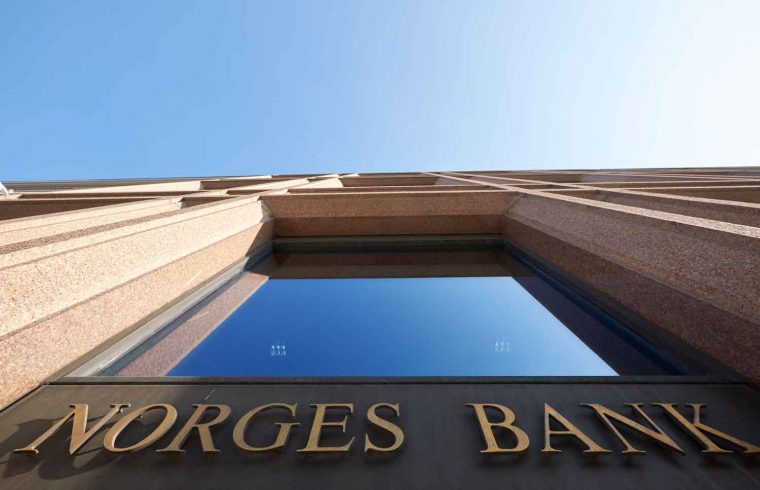Accompanying slides of the speech.
Please note that the text below may differ from the actual presentation.
Thank you for this opportunity to report on the conduct of monetary policy. My introduction here today is based on Norges Bank‘s Annual Report for 2018 and our monetary policy assessments up to the monetary policy meeting yesterday.
Since 2001, the main objective of monetary policy in Norway has been low and stable inflation. In March 2018, a new Monetary Policy Regulation was laid down. The inflation target was lowered from 2.5 to 2 percent. At the same time, the Regulation specified that inflation targeting shall be forward-looking and flexible so that it can contribute to high and stable output and employment and to counteracting the build-up of financial imbalances.
When I stood here about a year ago, I concluded that the outlook for the Norwegian economy was bright. We were emerging from the downturn that followed in the wake of the oil price decline in 2014. Growth was again on a firm footing and unemployment had declined. There were prospects that the policy rate would shortly be raised. I emphasised that this was a good sign.
In September 2018, Norges Bank raised the policy rate for the first time in over seven years. The rate was raised further in March of this year, and is now 1 percent. Gradual interest rate normalisation means that the Norwegian economy is faring well.
The rate hikes were signalled well in advance. Norges Bank places substantial emphasis on clear and effective communication of policy rate prospects.
Our main channel of communication is the Monetary Policy Report, which contains a thorough assessment of information about developments in the Norwegian economy and the background for the monetary policy decision. In order to reach a broader audience, we communicate through different channels. We give speeches and presentations throughout the country where we address local business leaders, the financial industry or university and college students.
In 2018, we launched a new product on our website – Pengepolitikken kort fortalt [Monetary policy in brief].1 This product is aimed in particular at those looking for background on the interest rate decision in a more simplified and relatable version. The message, of course, is the same as in our Monetary Policy Report.

Chart: GDP for Norway’s trading partners
Let me return to economic developments.
Norway’s trading partners have experienced a broad economic upturn in recent years. This has led to a considerable improvement in labour market conditions, and wage growth has gradually begun to rise. In 2018, growth among trading partners slowed somewhat, particularly in Europe. Heightened uncertainty had likely contributed to dampening growth. Among other things, there was considerable uncertainty surrounding trade tensions between the US and China and the UK’s withdrawal from the EU. Despite somewhat lower growth, unemployment continued to edge down in many countries. US unemployment is now the lowest in 50 years. Consumer price inflation among trading partners picked up in 2018, mainly owing to higher energy prices. Underlying inflation was fairly stable among our main trading partners.
Chart: International interest rates
Official policy rates in the US, UK and Sweden were raised in 2018. The US federal funds rate has been raised in several steps in recent years, and the target range is now 2.25 to 2.5 percent. Nevertheless, the global interest rate level remains low, and market expectations indicate a low level in the years ahead. In the euro area, there are prospects that the ECB deposit facility rate will be negative for some time to come.
Chart: Oil prices and the krone exchange rate
The tailwind from the rebound in oil prices has provided a considerable boost to the Norwegian economy in recent years. Oil prices have more than doubled since the low in early 2016. In 2018, oil prices were highly volatile in periods, primarily reflecting supply-side conditions. Towards the end of 2018, uncertainty about global economic prospects had a dampening impact on oil prices. After rising to above USD 85 per barrel through autumn, oil prices fell to below USD 55 per barrel at year-end. Prices have edged up again since then.
Despite the rise in oil prices, the Norwegian krone has been fairly weak since 2014. A weak krone has a positive influence on exporting companies. At the same time, prices for imported goods and services increase. A weaker krone therefore leads to higher inflation. Measured by the import-weighted exchange rate index (I-44), the krone appreciated somewhat in the period to autumn 2018, but depreciated again towards year-end. The depreciation coincided with a fall in oil prices and heightened uncertainty in global financial markets.
Chart: Growth mainland Norway
Growth in the Norwegian economy has been solid since autumn 2016. At the same time, labour market conditions have improved considerably. The number of employed has increased by more than 100 000, and unemployment has declined. Solid global growth, higher oil prices and low interest rates have contributed to lifting growth. The enterprises in Norges Bank’s Regional Network reported rising output growth through 2018, particularly for oil service providers thanks to the rebound in petroleum investment on the Norwegian shelf following several years of decline. There was also a pick-up in exports from oil service companies.
Chart: Employment as a share of the population
After some years of solid growth, spare capacity has gradually diminished. At the end of 2018, capacity utilisation appeared to be close to what we regard as a normal level. Employment also appears to have returned to a more normal level. Owing to a high employment rate, the number of employed persons as a share of the working-age population is now close to the level prevailing before the sharp fall in oil prices in 2014.
In 2018, employment rose in most sectors of the Norwegian economy, including oil-related industries. More people entered the labour market, but unemployment nonetheless edged down. There are signs of growing pressures in the economy. A rising number of Regional Network contacts report little spare capacity. A number of employers report difficulties in finding skilled and experienced labour.
In the wake of the oil price decline, wage growth has been moderate. The improvement in the labour market has contributed to a pick-up in wage growth in recent years. At the same time, inflation has been high. As a result, real wage growth has been low, with little improvement in household purchasing power.
Chart: Consumer prices
Consumer price inflation edged up through 2018, primarily reflecting a sharp increase in electricity prices. Underlying inflation also moved up, partly owing to the pick-up in wage growth and higher imported inflation. Annual consumer price inflation (CPI) was 2.7 percent in 2018.
Persistently high debt growth has added to the vulnerability of the household sector. High house price inflation has fuelled debt growth. In 2018, house price inflation was low, and debt growth eased somewhat. Debt nevertheless grew faster than household disposable income. Because of a high household debt burden, the effect of an interest rate rise will likely be stronger than earlier.
Chart: Policy rate
The monetary policy assessments through 2018 attached weight to the fact that the monetary stance is expansionary. The policy rate increase is intended to prevent a rise in pressures in the economy that would trigger an acceleration in price and wage inflation. A higher interest rate also mitigates the risk of a renewed, rapid rise in property prices and debt. High price and wage inflation and a further build-up of financial imbalances would increase the risk of a sharp economic downturn further out.
The plan is to move gradually to a more normal interest rate level. Our assessment in March was that capacity utilisation was slightly above a normal level. At the same time, underlying inflation was a little higher than the inflation target of 2 percent. Our projections implied that the policy rate would be raised in the course of the next half-year. There were also prospects that the policy rate would rise to 1.75 percent by the end of 2022. This means that the average residential mortgage rate could increase from 2.6 percent in March to 3.5 percent in the course of the same period. We therefore believe that interest rates will not be as high as in previous upturns.
With that path for the policy rate, inflation is projected to be close to target in the years ahead, at the same time as unemployment remains low. More persons employed and prospects of higher wage growth will contribute to lifting income. Despite higher interest rates, there are prospects that most households will experience an improvement in purchasing power in the coming years.
The risk outlook is dominated by global developments. Over the past year, rising protectionism and political uncertainty have weighed on global growth. The UK’s relations with the EU have yet to be clarified. If trade tensions deepen, growth among trading partners may be lower than we projected in March.
The uncertainty surrounding global developments and the effects of monetary policy suggests a cautious approach to interest rate setting.
Our most recent monetary policy meeting was held yesterday, and we published the decision earlier today. Since the publication of our March projections, capacity utilisation appears to be rising as expected, while inflation has been a little higher than projected. Global uncertainty persists. At its monetary policy meeting, the Executive Board decided to keep the policy rate unchanged at 1.0 percent. The Executive Board’s current assessment of the outlook and balance of risks suggests that the policy rate will most likely be raised in June.
Our mission is to deliver low and stable inflation, while contributing to high and stable output and employment. Should economic developments diverge from our current projections, the policy rate path will be adjusted.
Thank you for your attention.












